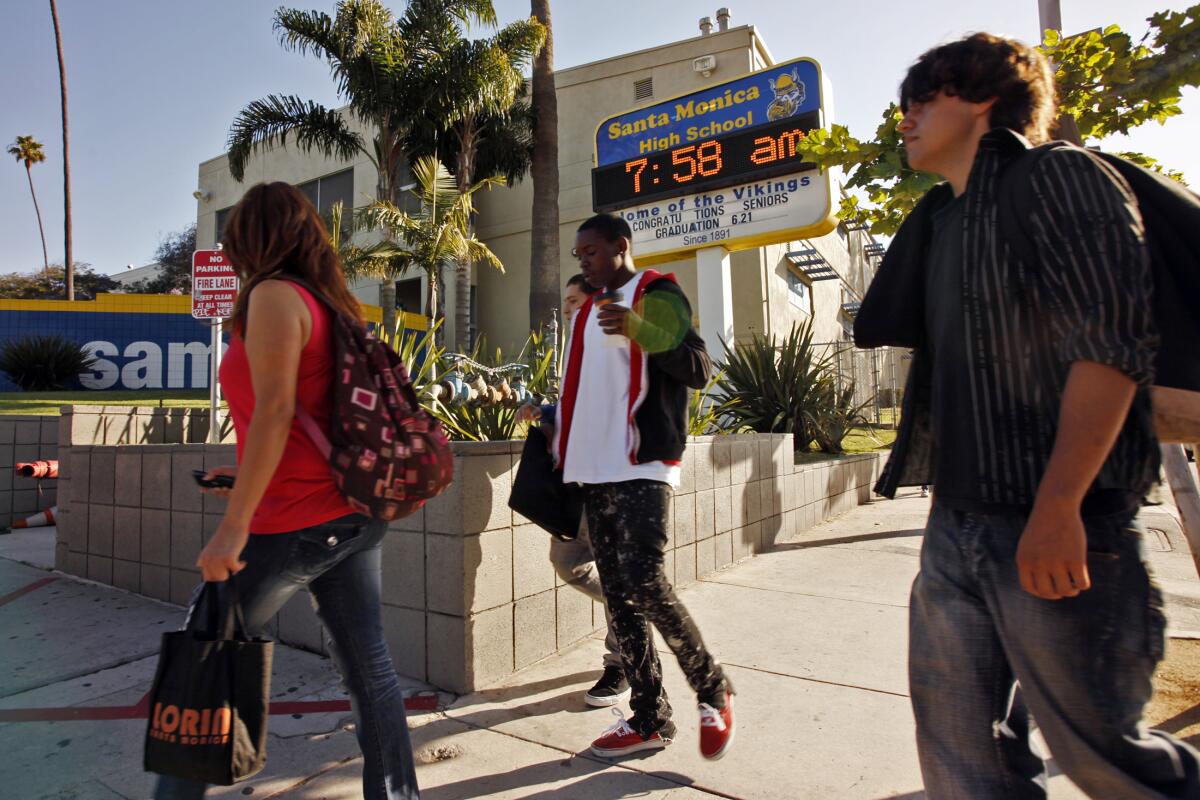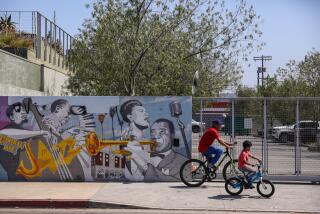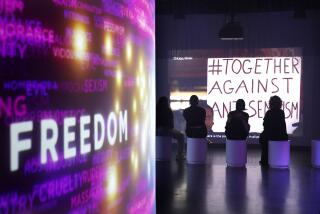Op-Ed: Santa Monica was never a progressive bastion for Latinos

When Oscar de la Torre was 19 and a new graduate of Santa Monica High School, his family received a letter that appeared to be from the Santa Monica-Malibu Unified School District, with the district’s bulk-mail permit number and address labels.
Inside, they found a typed, nine-paragraph hate screed. Heading: “Samohi Association for the Advancement of Conservative White Americans.” (“Samohi” is short for Santa Monica High School.) It called Mexicans “brown animals” and “the most lazy and ignorant race in the world.” It promised: “We’ll gas you like Hitler gassed the Jews.”
The rabidly racist letter, sent to nearly 800 local families with Latino surnames on May 22, 1991, even singled out De la Torre, claiming he was elected student body president the previous year because of his Mexicanness. “Oscar isn’t smart enough to be ASB janitor … Why should there be a double standard for these wild beasts?”
Police suspected a school system employee with access to the mailing materials was behind the hate crime. But they didn’t get any leads, despite a $25,000 cash reward. Thirty years later, it remains unsolved.
Barney Melekian, who helped lead the Santa Monica Police Department investigation, told me recently that the crime was unprecedented and “weird” since Santa Monica was known as “fairly liberal progressive.”
De la Torre, who was elected to the Santa Monica City Council in November, said the idea of Santa Monica as a progressive “bastion” has long been a myth. He’s known it most of his life: watching friends harassed by cops, his streets neglected, a high school counselor telling him he belonged in auto shop classes instead of Advanced Placement courses.
The failure to solve the hate crime was, for him, just another example of systemic racism and indifference to Latinos in Santa Monica. This week, De la Torre plans to ask the city to post another reward for information. He’s more interested in securing an apology for the Latino community than punishment for the perpetrator. “It’s about healing,” he said.
The letter was sent during a wave of anti-Mexican hostility in California, when residents passed propositions attacking bilingual education, affirmative action and more. It presaged the Trump era’s national resurgence of white supremacy, which began with the reality TV mogul attacking Mexicans as “rapists” and “criminals.”
“It has long been an insult to be considered Mexican in this city,” wrote Rodolfo Acuña in his 1996 book, “Anything but Mexican: Chicanos in Contemporary Los Angeles.”
The problem isn’t exclusive to conservatives. There’s also liberal white supremacy, which likewise resists sharing power with Latinos. When voters in the now-blue California had the opportunity in 2020 to repeal the anti-affirmative action proposition from the 1990s, most rejected the idea.
Santa Monica is a microcosm of the unreliable progressivism of affluent white Democrats. Despite the reality of anti-Latino racism, De la Torre said, “The brown agenda is not really being discussed by the white power structure.” He said that in some ways it’s easier for city officials to support initiatives like the “Black Agenda” to address systemic racism in Santa Monica because the smaller Black community doesn’t pose the same diluting threat to the city’s primarily white power structure.
He pointed to the voting rights lawsuit the city is fighting to avoid district elections, which would improve Latino representation. De la Torre’s wife, Maria Loya, is a plaintiff. Kevin Shenkman, a lawyer who has sued many cities over California Voting Rights Act violations, said Santa Monica’s resistance is unparalleled. “This will probably go down as the most expensive voting rights case in the history of the United States,” he said.
De la Torre wants to revisit the 1991 hate crime as part of a campaign to compel a reckoning with anti-Latino racism. While some may argue the letter was just words, De la Torre says words matter. They can lead to violence against Latinos and internalized racism among Latinos. “You lose a positive identity,” he said. “It turns into a whole host of self-destructive behaviors.”
As a boy, De la Torre felt embarrassed about being seen eating the burritos his mom made for him. “I remember thinking, ‘I don’t want to be Mexican,’” he said. It took a lot of work to unlearn the culture’s anti-Mexican hate.
Ten years after the hate crime, De la Torre was a counselor at the high school and working on racial equity issues, when he met Stephen Miller, Trump’s speechwriter and top advisor, who was then a student attacking Mexicans and spouting anti-immigrant views. De la Torre said Miller “learned” racism just as he himself had learned to internalize racism — and that the cycle can be stopped.
We can put an end to the viral, generational spread of anti-Latino hate. We just have to take seriously the danger of hate speech and institutional racism, yesterday and today. We must acknowledge our small or large roles in perpetuating the harm. And to that letter writer, De la Torre says: “Come forward, say, ‘I was wrong.’ We’re a forgiving community.”
Jean Guerrero is an investigative journalist and author of “Hatemonger: Stephen Miller, Donald Trump and the White Nationalist Agenda.” She is a contributing writer to Opinion.
More to Read
A cure for the common opinion
Get thought-provoking perspectives with our weekly newsletter.
You may occasionally receive promotional content from the Los Angeles Times.










